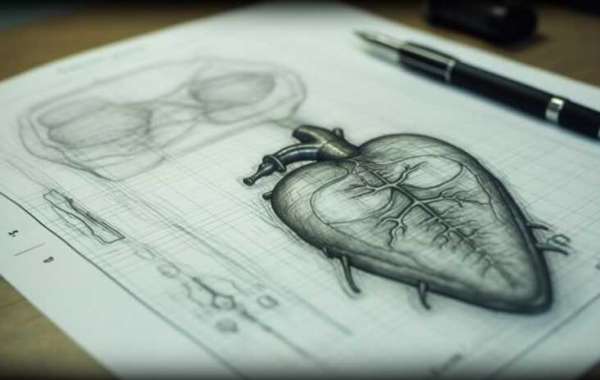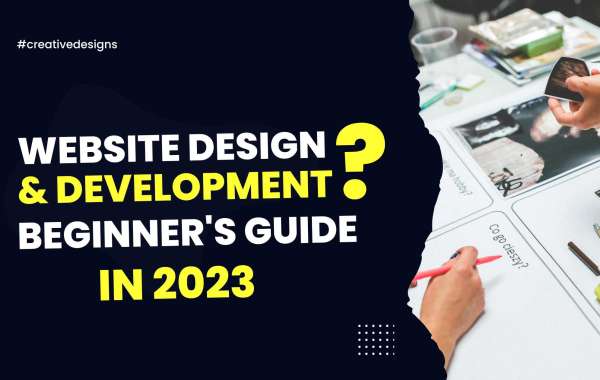In intellectual property, Over the years, technological advancements have transformed how these illustrations are created and utilized. One of the most transformative forces in this domain is artificial intelligence (AI). This article delves into AI’s present and future role in patent illustration, exploring its current applications and the potential for revolutionizing the field.
The Current Landscape: How AI is Impacting Patent Illustration
In the ever-evolving landscape of technology, artificial intelligence (AI) has emerged as a transformative force with the potential to reshape various industries. One such field that AI is significantly impacting is patent illustration. As the importance of clear and precise visual representation of inventions grows, AI-powered tools and techniques are being harnessed to streamline and enhance the patent illustration process. This section explores the current applications of AI in patent illustration and how these advancements are influencing the way inventions are visually communicated and protected.
1. Automated Drawing Generation
Traditionally, creating patent illustrations was a labor-intensive process that required skilled illustrators to meticulously translate complex invention descriptions into detailed visual representations. However, with the integration of AI, the process of generating patent drawings has become considerably more efficient. AI algorithms can analyze textual descriptions provided in patent applications and automatically generate accurate illustrations based on the provided information. This not only saves time but also reduces the potential for human errors in translating complex technical details into visual form.
2. Image Recognition and Classification
AI’s prowess in image recognition and classification is being leveraged to enhance patent illustrations. Patent documents often include intricate diagrams with various components and structures. AI algorithms can be trained to recognize and label different parts of an invention’s diagram, improving the organization and clarity of illustrations. This not only assists patent examiners in understanding the invention but also contributes to a more coherent presentation of the invention’s features.
3. Enhanced Visualizations
AI’s capabilities extend beyond 2D illustrations to generate detailed 3D visualizations of complex inventions. This is particularly beneficial for inventions that involve intricate spatial relationships or moving parts. AI-powered software can create interactive 3D models that allow patent examiners and other stakeholders to explore the invention’s functionality from various angles. This enhanced visualization contributes to a more comprehensive understanding of the invention’s technical aspects.
4. Compliance with Guidelines
Patent offices have strict guidelines regarding the formatting, labeling, and presentation of patent illustrations. Non-compliance with these guidelines can lead to rejections or delays in the patent application process. AI tools can assist in ensuring that illustrations adhere to these guidelines, minimizing the chances of technical errors. By automatically checking and adjusting illustrations for compliance, AI contributes to a smoother patent application process.
5. Text-to-Image Conversion
Another noteworthy application of AI in patent illustration is text-to-image conversion. Inventors often provide detailed textual descriptions of their inventions in patent applications. AI models trained on patent-specific language can interpret these descriptions and generate corresponding visual representations. This aids in bridging the gap between technical language and visual comprehension, making it easier for patent examiners to evaluate the invention’s uniqueness and functionality.
The Promising Future: AI’s Potential in Patent Illustration
The journey of artificial intelligence (AI) in the realm of patent illustration has only just begun, with its potential to revolutionize the field becoming increasingly evident. As AI technologies continue to advance, their capacity to reshape the way inventions are visualized, understood, and protected is becoming more pronounced. This section delves into the promising future of AI in patent illustration, exploring the potential applications and benefits that lie ahead.
1. Customization and Adaptability
AI has the potential to cater to the unique preferences and requirements of inventors, attorneys, and other stakeholders involved in the patent application process. Future AI systems could generate patent illustrations that match specific styles, ensuring that the visual representation aligns with the branding or personal preferences of inventors. This level of customization not only enhances the visual appeal of patent documents but also establishes a stronger connection between the inventor and the invention’s representation.
2. Interactive Illustrations
Imagine patent illustrations that go beyond static images on paper. With AI, the creation of interactive patent illustrations becomes feasible. Stakeholders, including patent examiners, inventors, and potential licensees, could engage with 3D models of inventions. This interactivity would allow users to manipulate the models, zoom in on intricate details, and gain a comprehensive understanding of the invention’s features. Interactive illustrations would enhance the communication of complex ideas and contribute to more efficient evaluations.
3. Semantic Understanding
Current AI models excel at recognizing patterns and objects within images, but the future holds the potential for AI systems to understand the semantic meaning behind textual descriptions. Advanced AI algorithms could comprehend the intricacies of an invention’s description, resulting in illustrations that are not only visually accurate but also contextually relevant. This deeper level of understanding would bridge the gap between the technical language of patents and the visual representation of inventions.
4. Integration of Multi-Modal Data
AI’s ability to process and interpret various forms of data could lead to the integration of multiple modalities into patent illustrations. Textual descriptions, technical diagrams, audio explanations, and even video demonstrations could be combined to create comprehensive and multi-dimensional patent illustrations. This approach would cater to diverse learning styles and communication preferences, enabling a more inclusive and accessible patent application process.
5. Faster and More Efficient Patenting Process
The integration of AI into patent illustration has the potential to expedite the entire patenting process. AI-powered tools can generate accurate illustrations in a fraction of the time it would take for a human illustrator. This increased efficiency could lead to quicker patent approvals and reduced backlogs in patent offices. Additionally, the use of AI-generated illustrations could streamline the communication between inventors, patent examiners, and legal professionals, further accelerating the application process.
Challenges and Considerations
As the promising future of AI in patent illustration unfolds, certain challenges and considerations must be addressed. Ensuring the quality and accuracy of AI-generated illustrations is paramount. Thorough validation processes and human oversight are essential to prevent errors or misinterpretations. Furthermore, the legal and ethical implications of AI-generated content, including issues of ownership and intellectual property rights, need to be carefully navigated to ensure a fair and transparent system.
Challenges and Considerations in Integrating AI into Patent Illustration
While the potential benefits of integrating artificial intelligence (AI) into patent illustration are substantial, this transformation is not without its challenges and considerations. As AI technologies continue to evolve and play a more prominent role in the creation and interpretation of patent illustrations, it’s important to navigate these challenges to ensure the quality, integrity, and ethical use of AI-generated content. This section explores some of the key challenges and considerations associated with the integration of AI into patent illustration.
1. Quality Control and Accuracy
Ensuring the accuracy and quality of AI-generated patent illustrations is paramount. AI models, while powerful, are not infallible and can produce errors or misinterpretations. To address this challenge, a robust validation process that involves human oversight is essential. Human experts should review AI-generated illustrations to verify their accuracy and ensure that they faithfully represent the technical details of the invention. Continuous monitoring and refinement of AI algorithms are necessary to minimize errors and maintain the reliability of patent illustrations.
2. Legal and Ethical Implications
The integration of AI in patent illustration raises legal and ethical questions, particularly related to intellectual property rights and ownership. Who owns the rights to AI-generated illustrations – the inventors, the illustrators, or the organizations developing the AI tools? Establishing clear guidelines and regulations regarding ownership and usage rights is crucial to avoid disputes and ensure fairness. Additionally, ethical considerations surrounding the use of AI-generated content should be addressed to ensure that AI respects the principles of accuracy, transparency, and accountability.
3. Lack of Contextual Understanding
While AI models can analyze text and images, they may lack a deep contextual understanding of inventions. The nuanced and intricate nature of certain technical concepts might be challenging for AI systems to grasp fully. As a result, there’s a risk of misinterpreting the invention’s functionality or features. To mitigate this challenge, AI models need to be trained on domain-specific language and concepts, and they should be complemented with human expertise to ensure that the visual representation accurately reflects the invention’s essence.
4. Overreliance on Automation
The temptation to rely solely on AI-generated patent illustrations could arise, potentially leading to a diminished role for human experts in the process. While AI brings efficiency, human creativity, intuition, and judgment remain invaluable. A balanced approach that leverages AI to streamline routine tasks while preserving the human touch for critical decision-making and creative aspects is necessary to maintain the integrity and authenticity of patent illustrations.
5. Data Privacy and Security
AI models require substantial amounts of data for training, which could include confidential or sensitive information related to inventions. Ensuring the privacy and security of this data is essential to prevent unauthorized access or misuse. Organizations that develop AI tools must implement robust data protection measures and adhere to data privacy regulations to safeguard the confidentiality of inventors’ intellectual property.
6. Accessibility and Inclusivity
While AI has the potential to enhance patent illustration, it’s important to ensure that the benefits are accessible to all inventors, including those who may not have the resources to access advanced AI tools. Overcoming barriers such as technological literacy, access to AI platforms, and potential biases in AI algorithms is crucial to ensure that the patent application process remains inclusive and equitable.
Conclusion
The evolution of patent illustration techniques is undergoing a remarkable transformation with the integration of artificial intelligence (AI). As we’ve explored in this article, AI is already making a substantial impact on how patent illustrations are created, understood, and utilized. From automating drawing generation to enhancing visualizations and facilitating compliance with guidelines, AI is streamlining and improving various aspects of the patent application process.
Looking ahead, the promising future of AI in patent illustration holds even greater potential. Customization and adaptability will redefine how patent illustrations reflect the preferences and branding of inventors and attorneys. Interactive illustrations will enable a deeper understanding of complex inventions, allowing stakeholders to engage with 3D models in meaningful ways. The semantic understanding of textual descriptions will bridge the gap between technical language and visual representation, leading to more accurate and contextually relevant illustrations. Furthermore, the integration of multi-modal data and AI’s role in expediting the patenting process will drive efficiency, accessibility, and innovation in the intellectual property landscape.
Read More
The Evolution of Patent Illustration Techniques
Mastering Patent Illustration: A Guide to Digital Tools and Techniques








